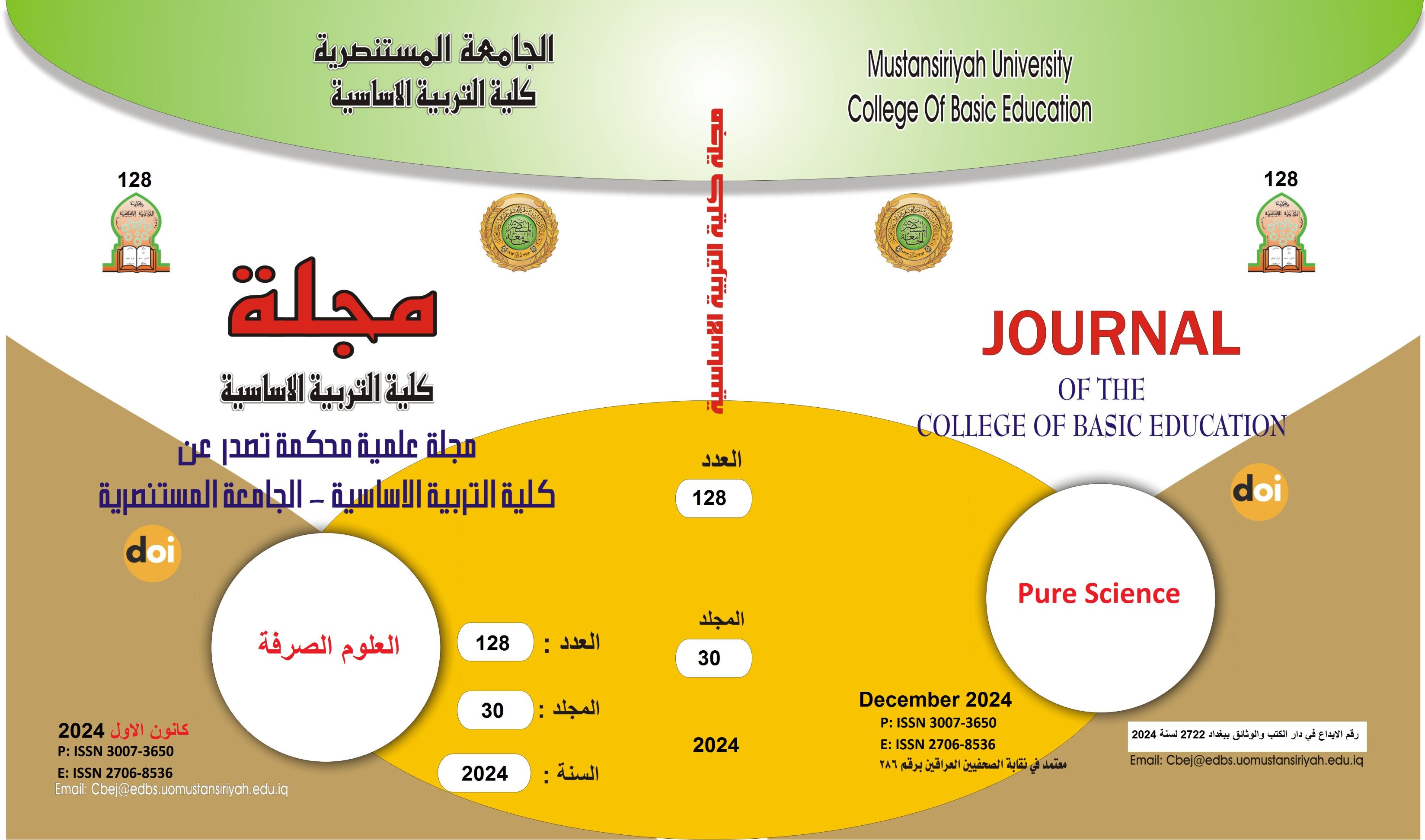A strategy for teaching by doing and its effectiveness in the performance of students of the Department of Art Education by drawing on the skin
Main Article Content
Abstract
(A strategy for teaching by doing and its effectiveness in the performance of students of the Department of Art Education by drawing on the skin)
Summary of the research:
The research problem was identified in the following question: Q/ Is the work-learning strategy effective in developing the skillful performance of the students of the Department of Art Education by drawing on the skin?
The objectives of the research were to identify:
Identifying the effectiveness of the learning-by-doing strategy in developing the skillful performance of the students of the Department of Art Education by drawing on the skin. In order to ensure the achievement of the research objectives, the following hypotheses were formulated:
1- There are statistically significant differences at the level of significance (0.05) between the mean scores of the experimental group students and the mean scores of the control group in the post-skill test of drawing on the skin.
2- There are statistically significant differences at the significance level (0.05) between the mean scores of the experimental group students and the mean scores of the control group in the post-cognitive test of drawing on the skin. To achieve the goal of the research, the researcher chose the Department of Art Education / College of Basic Education, Al-Mustansiriya University / first-stage students of the academic year 2022-2023 AD / the second course to conduct the experiment. Cognitive and skillful, and using the t-test for two independent samples, the researcher concluded the following The experimental method with equal groups and pre and post test was chosen to develop the skills of drawing on the skin in handicrafts. The sample size was 149 after exclusion, as it was chosen by the intentional method, and then the students were randomly selected for each control and experimental group, as the number of each group reached (40) students. and female students for the control group, Hall No. (1,2) and the experimental group, numbering (40), from Hall No. (3,4), as the total number of the sample became (80 male and female students), out of a total of four halls, as the number of one hall is 40 male and female students, and they were excluded Graduates of the Teachers Institute, because he has previous experience and two failures due to absence, and the equivalence of the two research groups has been conducted, and after processing the results statistically using ssps And by using the means, the research sample has been statistically equivalent using statistical means, (the t-test, the chi-square equation, the Raven test coefficient for intelligence, and the equivalence equation in the gender variable, as (Ka2) was used in the treatment of data for the gender variable, the difficulty coefficient for the paragraph, the discrimination coefficient, the effectiveness of wrong alternatives, and the coefficient Point Becerial Correlation to extract the correlation and the test stability equation, and the Cueder-Richardson equation to extract the stability in skill performance using the Alpha Cro Nabach method, and to measure the size of effectiveness, as the (McGogian) equation was used to calculate the average scores of students for the experimental group in pre and post skill and cognitive performance.
The results showed the following
1- Statistically significant differences between the mean scores of the students of the two research groups in the cognitive test and the skillful performance of handicrafts by drawing on the skin. In the light of these results, the researcher reached a number of conclusions, including:
1- The experimental group was superior to the control group in showing the results of the artwork.
2- The learning-by-doing strategy contributed to the development of students' skillful performance.
3- The participation of students with modern and new designs in performance that expands its ability and increases the effectiveness of its performance at work.
Article Details

This work is licensed under a Creative Commons Attribution-ShareAlike 4.0 International License.
